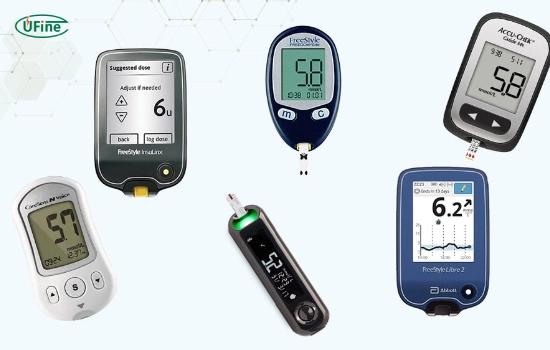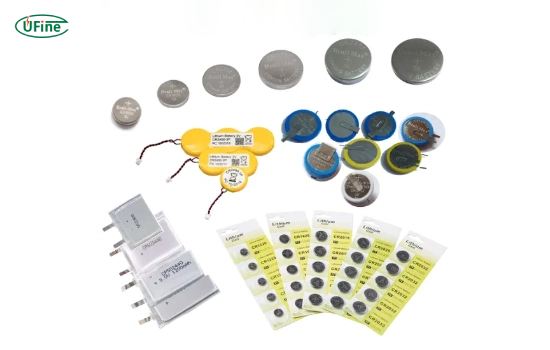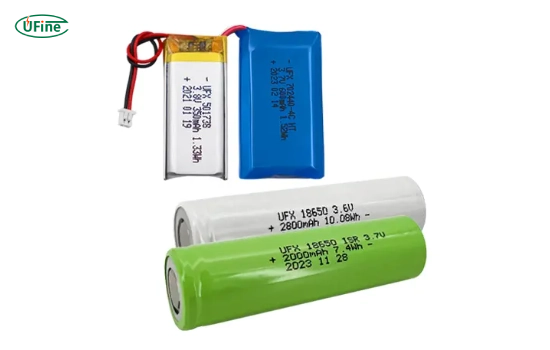Managing diabetes effectively hinges on accurate glucose monitoring, and at the heart of this process is the glucose meter. A critical component of these devices is the battery, which powers them to provide timely and reliable readings. This guide will delve into everything you need to know about glucose meter batteries, from their types and maintenance to troubleshooting common issues.
Part 1. What is a glucose meter?
A glucose meter is a portable medical device that measures glucose concentration in the blood. It is essential for individuals with diabetes, enabling them to monitor their blood sugar levels regularly. The device typically consists of:
- Lancet: A small needle used to prick the skin and draw blood.
- Test strips: Disposable strips that react with the blood sample to measure glucose levels.
- Display: The screen displays the glucose reading.
Understanding how these components work together is crucial for effective diabetes management.
Part 2. Why is the battery essential in a glucose meter?
The battery in a glucose meter is vital for its operation. The power source directly affects a glucose meter’s accuracy and reliability. When the battery is low or depleted, the device may provide consistent or correct readings, leading to better blood sugar management. This is particularly critical for individuals who rely on timely glucose readings to decide insulin dosages or dietary choices.
Moreover, a reliable battery ensures that the glucose meter can perform under various conditions, such as during travel or emergencies when immediate readings are necessary. Inconsistent power can also affect the meter’s ability to store data, essential for tracking glucose levels over time. Thus, understanding the importance of the battery is not just about maintaining the device; it’s about safeguarding health and well-being.
Part 3. What type of battery does a glucose meter use?
Glucose meters generally use two types of batteries:
- Disposable batteries: Glucose meters commonly utilize coin cell batteries, such as the CR2032. These batteries are compact, have a long shelf life, and are readily available. They provide a reliable power source for devices that require low to moderate energy consumption. The CR2032 battery, for example, has a nominal voltage of 3 volts and can provide power for months, depending on usage.
- Rechargeable batteries: Some advanced models come with rechargeable lithium-ion or lithium-polymer batteries. You can charge these batteries via a USB cable, and their design focuses on convenience and sustainability. Lithium-ion batteries are particularly advantageous because they offer a higher energy density, meaning they can store more energy in a smaller size. This results in longer usage times between charges and a reduced frequency of battery replacements.
Understanding the type of battery your glucose meter uses is essential for proper maintenance and replacement. The choice between disposable and rechargeable batteries often depends on personal preferences, usage patterns, and environmental considerations.
Part 4. How long do glucose meter batteries last?
The lifespan of a glucose meter battery can vary based on several factors, including the model of the meter and usage frequency. Generally, you can expect:
- Disposable batteries typically last anywhere from 6 months to a year, depending on usage. However, some users report shorter lifespans due to increased testing frequency or using lower-quality batteries.
- Rechargeable batteries: These can last for several hundred tests before recharge, with some models allowing for up to 2,000 tests on a single charge.
Knowing the expected battery life helps users plan for replacements and avoid unexpected downtime.
Part 5. What are the benefits of using lithium-ion batteries in glucose meters?
Lithium-ion batteries are increasingly being used in glucose meters due to their numerous advantages:
- Higher energy density: Lithium-ion batteries can store energy in a smaller volume, making glucose meters more compact and lightweight. This is especially beneficial for users carrying their meters throughout the day.
- Longer lifespan: These batteries typically have a longer cycle life compared to traditional disposable batteries. They can endure hundreds of charge cycles without significant degradation, making them a cost-effective choice in the long run.
- Fast charging: Lithium-ion batteries can be charged quickly, often reaching total capacity in hours. This feature is handy for users who need their glucose meters ready for use immediately.
- Lower environmental impact: By using rechargeable lithium-ion batteries, users can reduce the number of disposable batteries in landfills, contributing to a more sustainable approach to diabetes management.
- Consistent performance: Lithium-ion batteries maintain a stable voltage output throughout their discharge cycle, ensuring that glucose meters provide accurate readings until the battery is nearly depleted.
These benefits make lithium-ion batteries an excellent choice for modern glucose meters, enhancing user experience and reliability.
Part 6. How do you maintain a glucose meter battery?
Proper maintenance of your glucose meter battery can extend its lifespan and ensure reliable performance. Here are some tips:
- Regularly check battery levels: Familiarize yourself with your meter’s low battery indicator and replace the battery promptly.
- Keep battery contacts clean: Dirt or corrosion on battery contacts can lead to poor connections. Use a soft cloth to clean the contacts regularly.
- Store in a cool, dry place: Extreme temperatures can affect battery performance, so store your glucose meter in a stable environment.
- Avoid deep discharges: Rechargeable batteries should not be let discharge entirely before recharging, as this can reduce their lifespan.
By following these maintenance tips, you can help ensure that your glucose meter remains reliable.
Part 7. Troubleshooting common battery issues
If you encounter problems with your glucose meter battery, consider the following troubleshooting steps:
- The meter won’t power on: Check if the battery is installed correctly and replace it if necessary.
- Inconsistent readings: Low battery power can lead to inaccurate readings. Replace the battery and retest.
- Frequent low battery warnings: If you frequently receive low battery warnings, consider trying a different brand of batteries, as some may have better longevity than others.
- Battery leaks: If you notice any leakage from the battery compartment, remove the batteries immediately, clean the area, and replace them with new batteries.
These troubleshooting tips can help resolve common issues and maintain the functionality of your glucose meter.
Part 8. FAQs
-
How often should I replace my glucose meter battery?
You should replace your glucose meter battery every 6 months to 1 year or whenever you receive a low battery warning. -
Can I use rechargeable batteries in my glucose meter?
Yes, some glucose meters are designed to use rechargeable batteries. Always check your device’s specifications for compatibility. -
What should I do if my glucose meter displays a low battery icon?
Replace the battery as soon as possible to ensure accurate readings. -
How can I tell if my glucose meter battery is dead?
If your meter fails to power on or displays erratic readings, it may indicate a dead battery. -
Are there any safety concerns with glucose meter batteries?
Always use the recommended battery type for your glucose meter. Avoid using damaged or leaking batteries, as they can pose safety risks.
Related Tags:
More Articles

How to Choose the Best Floor Scrubber Battery for Commercial Cleaning?
Selecting the ideal floor scrubber battery ensures a long runtime, rapid charging, and minimal maintenance for efficient commercial cleaning operations.
Battery for Blower vs Battery for Leaf Vacuum: Which One Should You Choose?
Battery for blower vs leaf vacuum—learn the key differences in power, fit, and runtime to choose the right battery for your outdoor tool needs.
How to Choose the Right Battery for Blower?
Choosing the right blower battery? Consider voltage, capacity, chemistry & usage. This guide helps match the best battery for peak performance.
How to Choose the Best Insulated Battery Box for Lithium Batteries?
Choosing the Best Insulated Battery Box for Lithium Batteries? Discover key factors such as size, material, and safety for optimal protection and performance.
7 Critical Elements on a Lithium Battery Shipping Label
What must be on a lithium battery shipping label? Learn 7 key elements to ensure safety, legal compliance, and correct handling across all transport modes.






